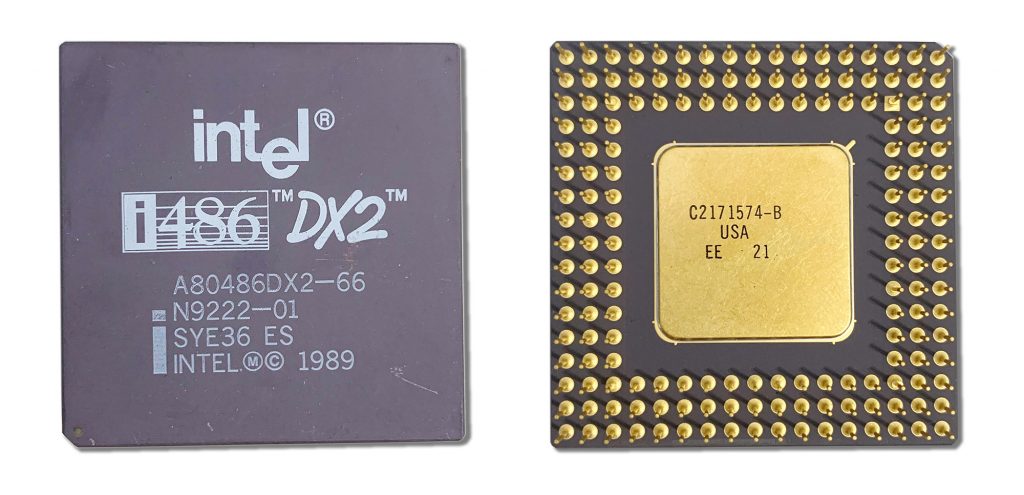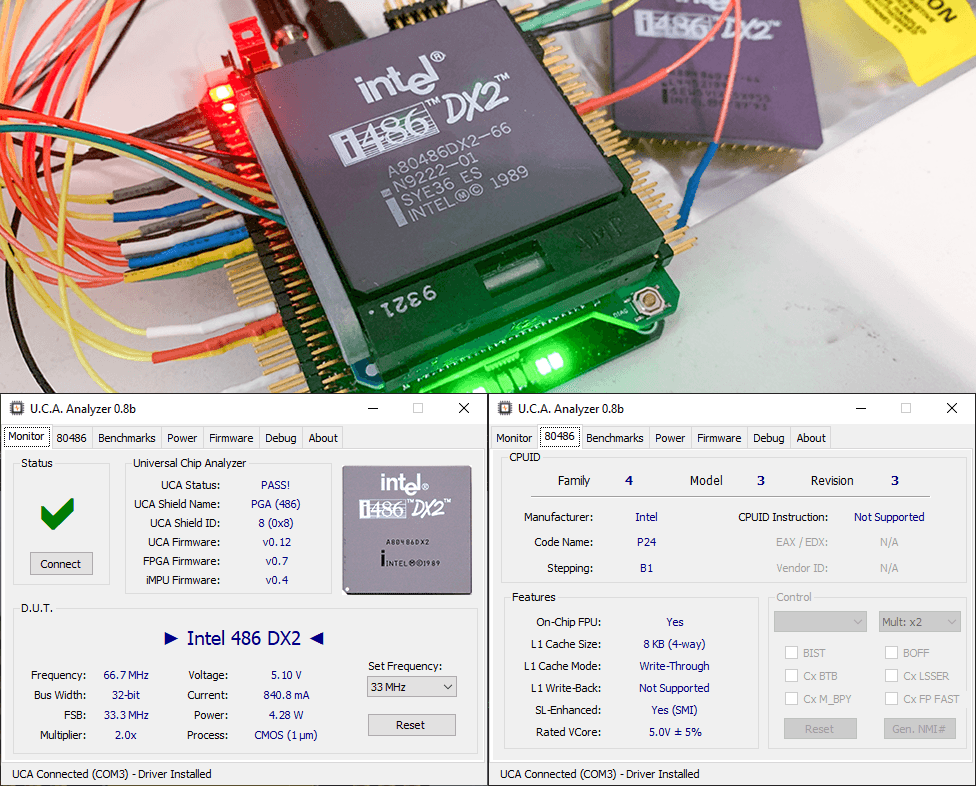I’m starting a new section: IC Analysis! The goal is to study odd or rare CPUs with the Universal Chip Analyzer. As an avid CPU collector, I have many of them. Since I started collecting back in the early 00s, I have only been interested in Engineering Samples. These are basically prototypes of retail CPUs. Knowing their specification is often very interesting for historical purposes (ie: to retrace the timeline of the development).
Let’s start with this 486 DX2-66 Engineering Sample:
 This processor is uncommon in many respects, even for an engineering sample. It comes with the standard Intel i486 DX2 logo but other writings are printed instead of being laser-engraved. The part number on the first line (“A80486DX2-66”) is the retail one, while Intel often used the code number (“P24” or “A80P24”) on early prototypes of the 486DX2.
This processor is uncommon in many respects, even for an engineering sample. It comes with the standard Intel i486 DX2 logo but other writings are printed instead of being laser-engraved. The part number on the first line (“A80486DX2-66”) is the retail one, while Intel often used the code number (“P24” or “A80P24”) on early prototypes of the 486DX2.
The second line shows the date when the die (the piece of silicon where the CPU has been engraved) was assembled inside the ceramic packaging: week 22 of 1992, so between May 25th and May 31st, 1992. The date when the die itself has been produced is marked on the back: week 17 of 1992 (between April 20 & 26, 1992). Intel officially introduced the first clock-doubled 486DX2 at 50 MHz on March 3rd, 1992. The 486DX2 at 66 MHz was launched five months later, on August 10th, 1992. This sample has been produced before the initial production of the 486DX2-66.
Another very rare feature of this CPU is the Intel’s product spec number used. From the 70s until today, Intel has used a 5-digit alphanumeric code (named “S-Spec”) to identify all their retail products. An S-Spec always starts with the letter “S” (ie: SX366 is a 80386 DX-33 and SR147 is a Core i7 4770K). The only exception is for prototypes (engineering or qualification samples), where the code begins with a “Q”. The presence of that “Q-Spec” (also named QDF) on a CPU is the most effective way to distinguish a pre-production sample from its standard production counterpart. On this obvious engineering sample (also marked “ES” on front), the QDF starts with S: “SYE36”. For a very short period (1991/1992), Intel produced some 386/486 Engineering samples with a spec code starting with “SXE”, “SYE” and “SZE”. The reason is still unknown, but this sample is one of them.
It’s now time to test this SYE36 sample with the UCA
And It works fine! This early sample does not support the CPUID instruction, but the value at reset is 0x433. The first commercial stepping is A2 with a CPUID set at 0x432. Only a DX2-50 has been released with this stepping, which didn’t seem able to run properly at 66 MHz. This sample uses the B1 stepping, like the first retail 486 DX2-66 (SX645) released. Power consumption measured on FPU benchmark mode is quite high (4.3 W) but still within specs (4.5 W). Later DX2-66s need less energy.
Despite its unusual markings, it seems this sample was a qualification sample rather than a “true” engineering sample. It was probably sent to Intel’s customers for validation some weeks before the official launch. Other than that, it’s strictly identical to a SX645 486 DX2-66.


